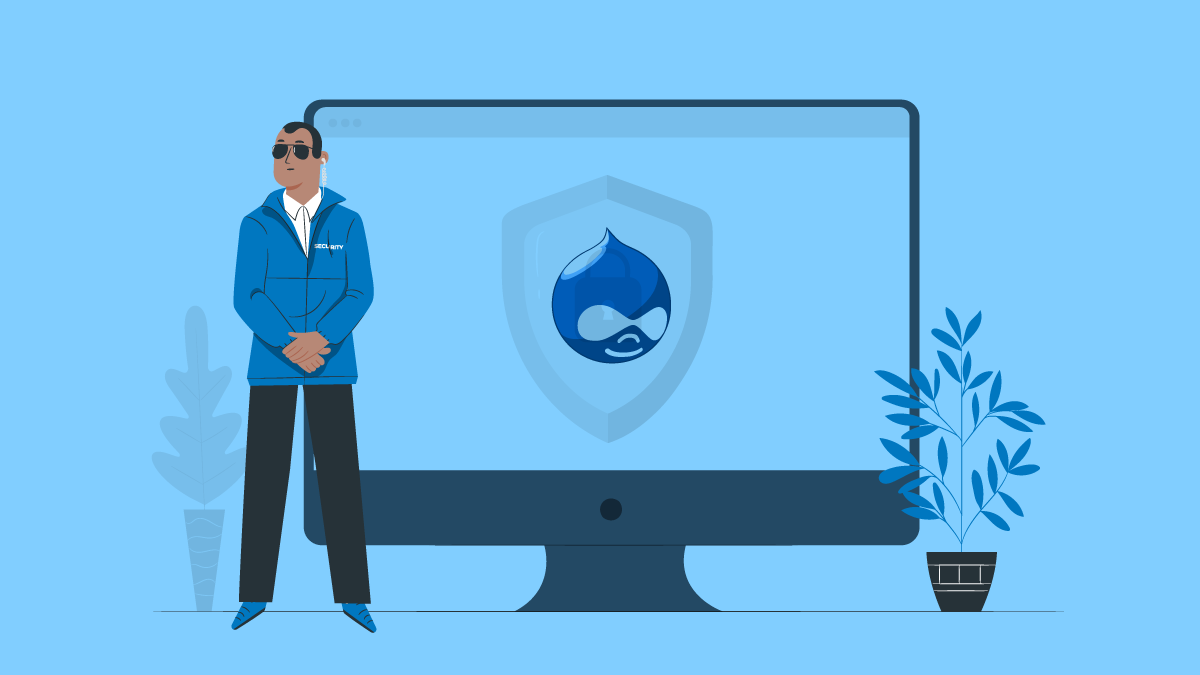In the wake of rising cyber threats, security of Drupal stores is becoming more and more important. Even though the security system of Drupal is better than most, it has its fair share of vulnerabilities. This year multiple vulnerabilities were uncovered, more like RCE vulnerabilities known as Drupalgeddon. These newly found vulnerabilities were also the reason which resulted in a number of hacked installations over the past few months. If you are concerned about your Drupal store, your concern is well-placed. Through this blog, we will discuss top 8 basic Drupal security practices employing on your website.

Top 8 Drupal security practices
1. Keep your Drupal store and modules up-to-date
It is important to keep the core files of your Drupal store and modules updated with the latest software. Each and every update is equipped with the security patches of vulnerabilities found in earlier versions. Using an outdated version of the software will expose your store to a number of threats and vulnerabilities. In order to update your store, follow the given steps:
For Drupal 7.x and 8.x
- Select ‘Available Updates’ from ‘Reports’

- To look for updates, select the ‘Check Manually’ option

It is highly recommended that you choose your source for themes and modules wisely. Try to install modules only from reputed companies or from the Drupal repository. This will ensure the safety of your Drupal store.
2. Regularly take backups of your store
A backup will ensure the safety of your files and folders in case everything goes wrong. You can restore your entire website with the help of a backup and you will not have to start your website from scratch. Generally, a backup includes all the core and module files.
Pantheon is a Drupal host that offers a one-click restore and backup. It also provides a sandbox environment to test the purpose before introducing them in the main environment. XAMPP or MAMP software can also be used to locally test the updates before introducing them to the live website.
3. Use strong and unique usernames and passwords
According to the secure link, 80% of the hacks involve password breaches. Henceforth, we recommend you to choose your username and password wisely. It is important that your password is complex and unique in nature but it is also important to select a complex username that cannot be easily predicted by a hacker. Using strong passwords is one of the easiest practices to ensure Drupal security.
4. Security modules
There are a number of security modules available in the market that can ensure Drupal Security. These snippets of codes can be used to fulfill almost any requirement your website needs (or might need later) without hiring a developer. For example, you can use security modules to secure the login page of your store, monitor for threats, check for alterations, implement strong passwords, and a lot more.
5. Drupal file permissions
The files present on your website contain important instructions and information essential to run the functions of your website smoothly. Unauthorized permission to these files can expose them to a number of vulnerabilities. Therefore, it is crucial to restrict the file permissions of a Drupal store to only authorized users (with different permissions such as read, write, and modify options).

You can also block permissions to the important files (authorize.php, upgrade.php, cron.php, install.php) of your Drupal directory. To deny the permission, write these codes in your .htaccess file.
<FilesMatch “(authorize|cron|install|upgrade)\.php”> Order deny, allow deny from all Allow from 127.0.0.1 </FilesMatch>
6. Secure the backend
Securing the backend of a website holds the same importance as that of securing the admin and login page of a website. It is crucial to harden the defense of your Drupal database. The first step to follow is to set a unique table prefix so that it gets difficult for hackers to guess. It will also protect your database from SQL injection.
7. SSL Certification
SSL certification ensures that the communication between two servers over the internet is encrypted in nature. The login page of a website must have SSL certification to ensure the safety of the client’s credentials. Without the use of an HTTPS connection, it is easier to intercept the transfer of information. An HTTPS connection not only secures the communication but will also improve the SEO ranking of your website.
8. Drupal Firewall
A firewall is a one-step solution to a number of problems that your website might face. It is an ingenious way to monitor the hacking attempts and thwart the efforts with just a click. A rock-solid firewall such as Astra will not only protect your website from common threats such as XSS, CSRF, SQLI, LFI, RFI, etc; but it will also help you in IP blocking and bot monitoring.

Conclusion
Securing and maintaining a Drupal store can become difficult if you do not know where to start. It is important to know the basic security practices that each and every website owner should implement. If these steps are too difficult for you to follow, Astra is here for you. I hope I have discussed the important security practices in this guide. However, if you think there are some security measures that should be on the list, feel free to drop by some comments.

